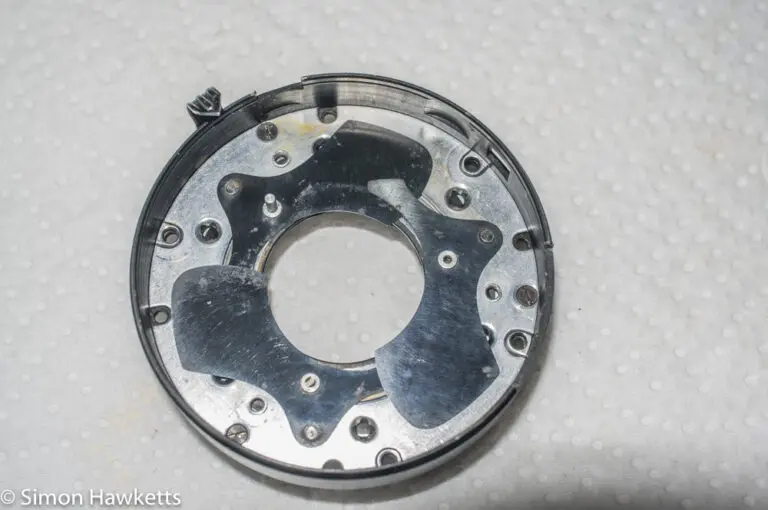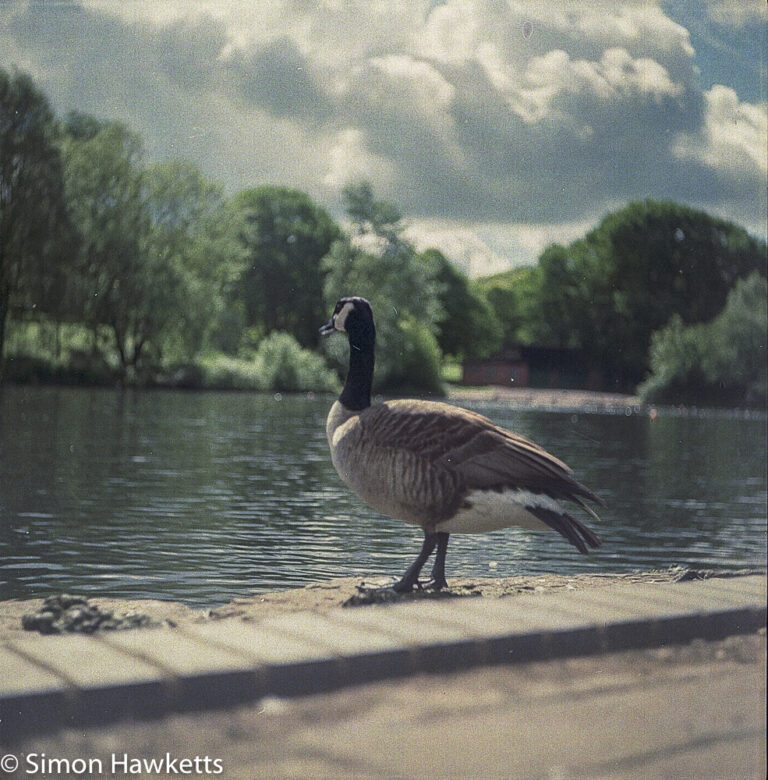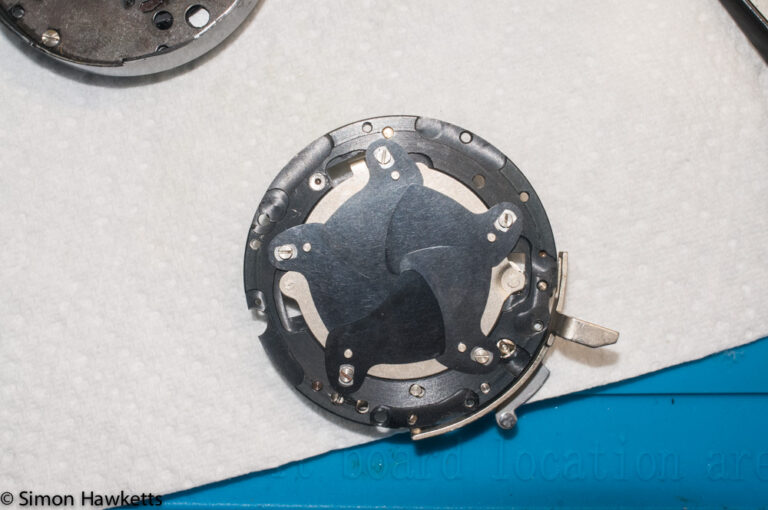Weltaflex TLR shooting experience
This morning I took my Weltaflex TLR with me for a walk round a rather cold and frosty Fairlands Park in Stevenage to try it out.

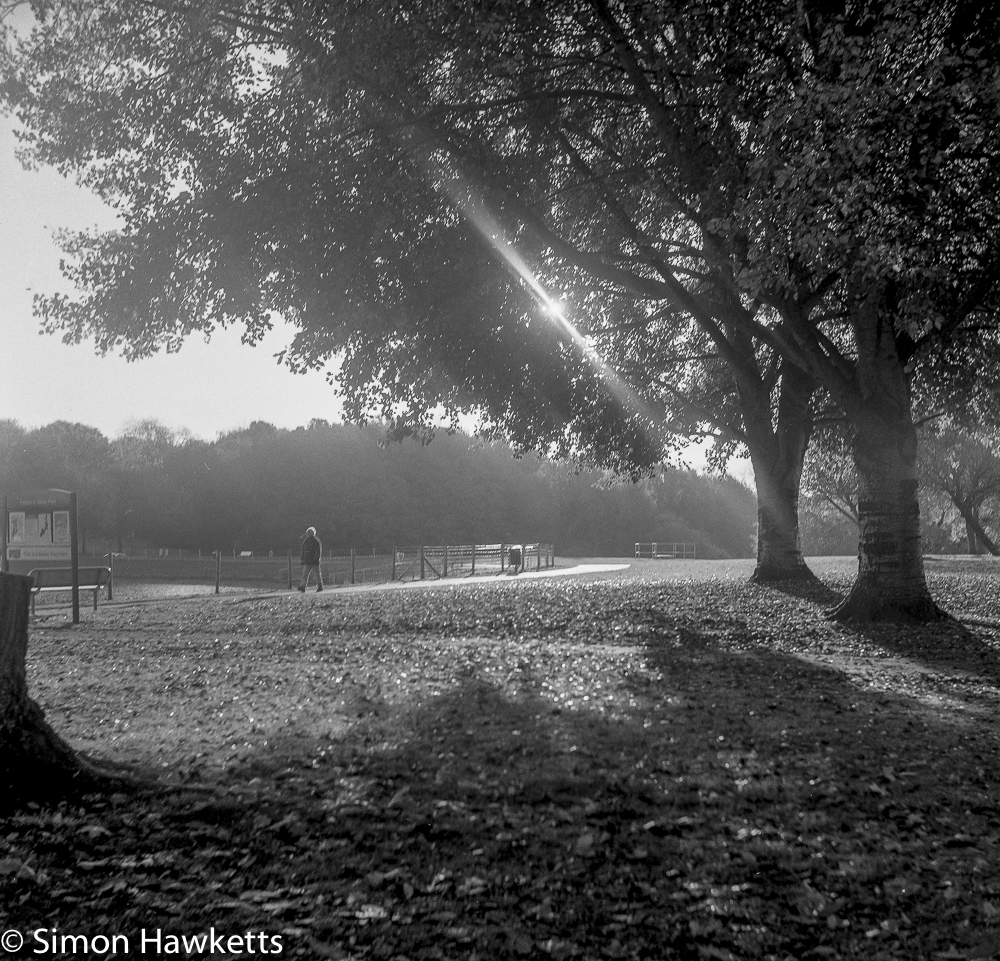
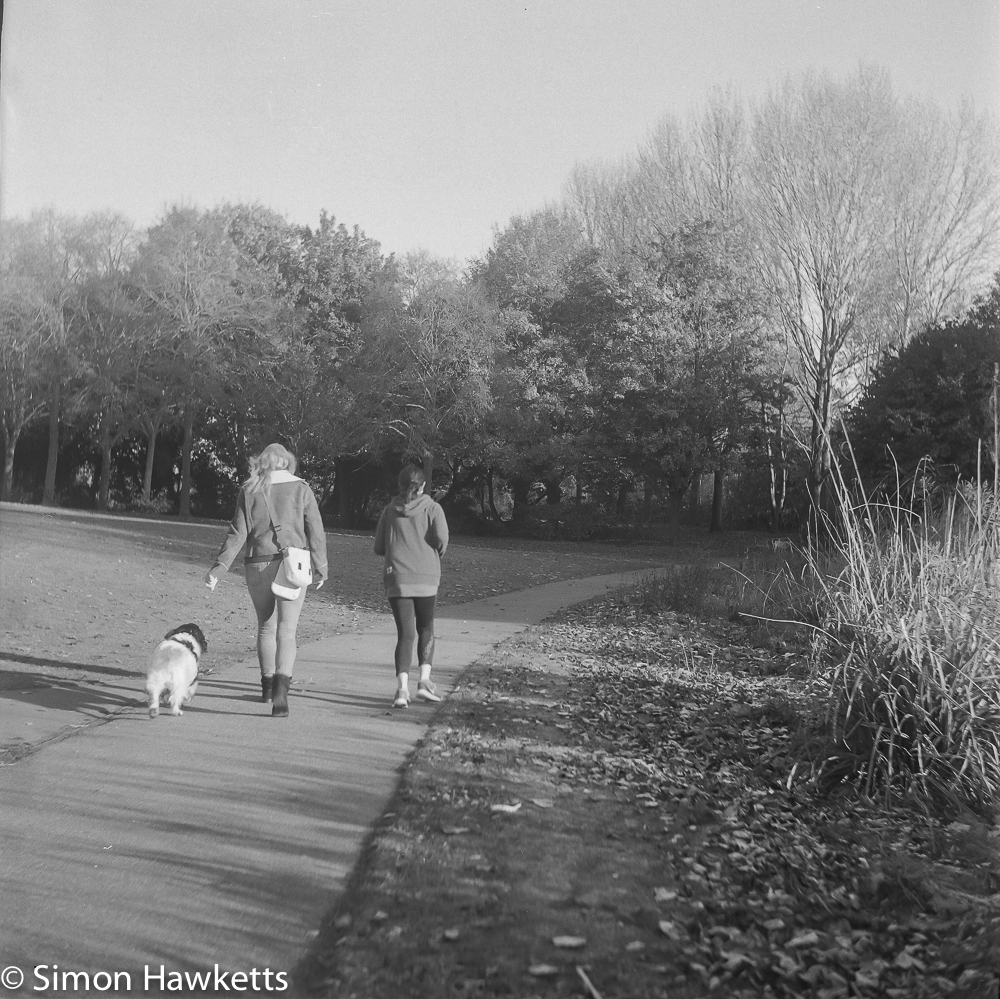

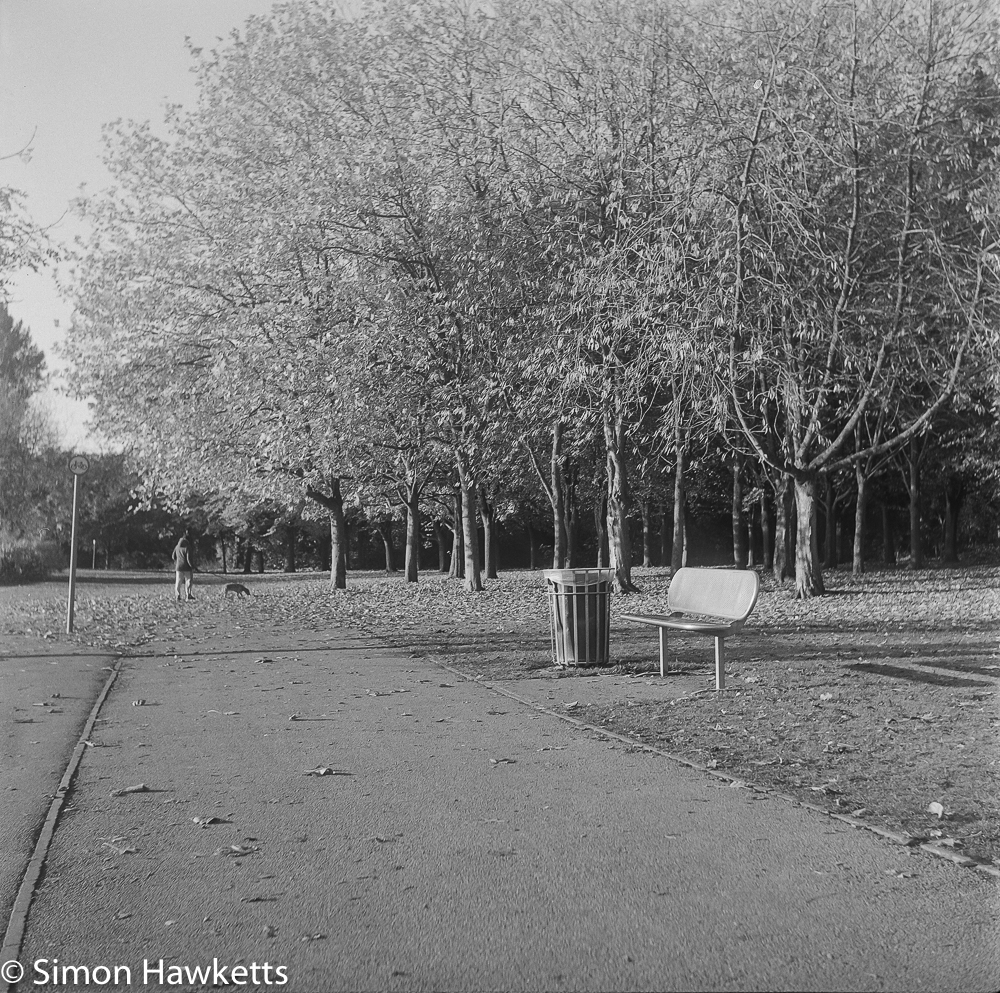
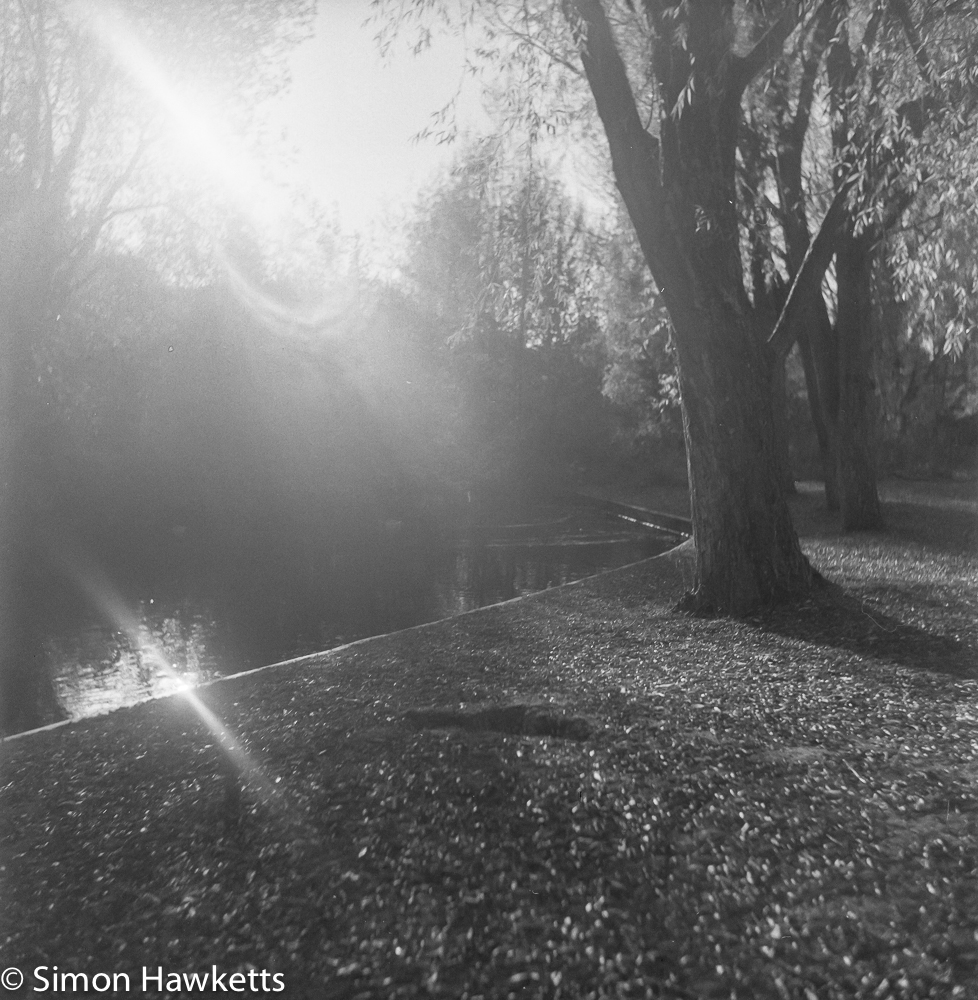
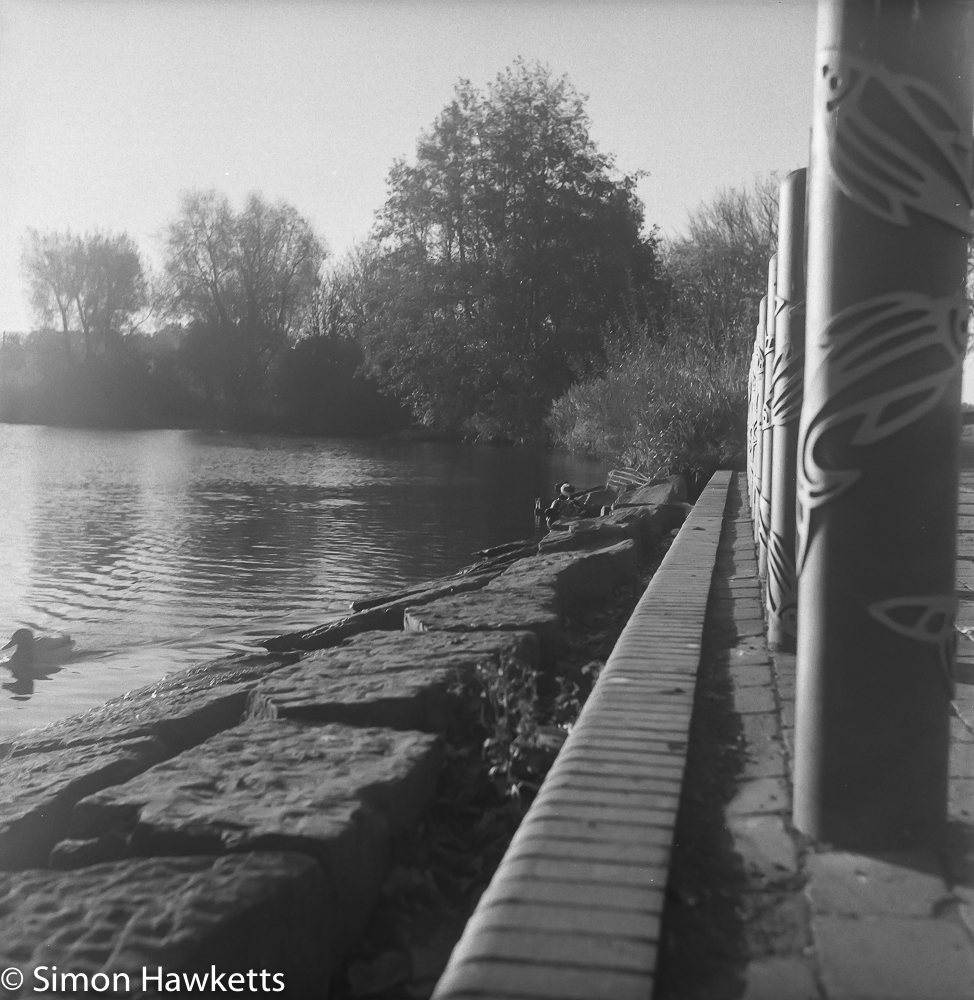
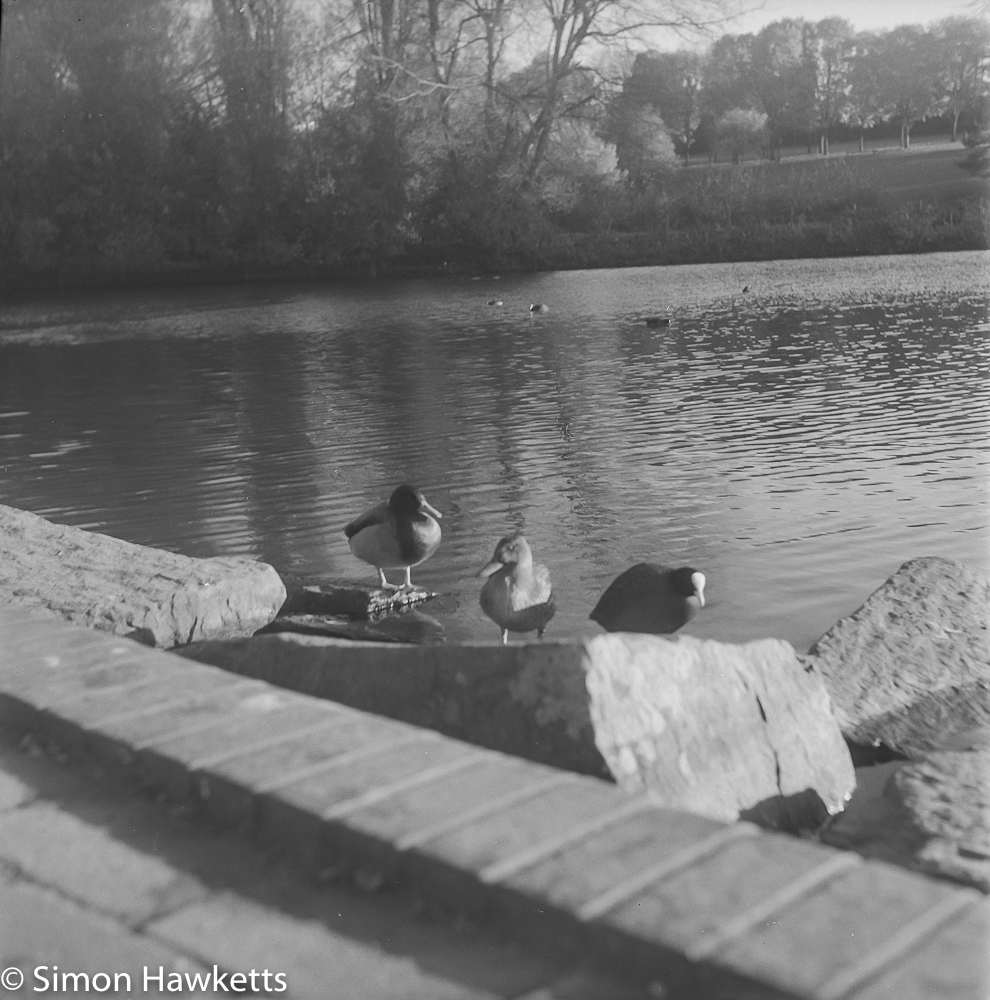
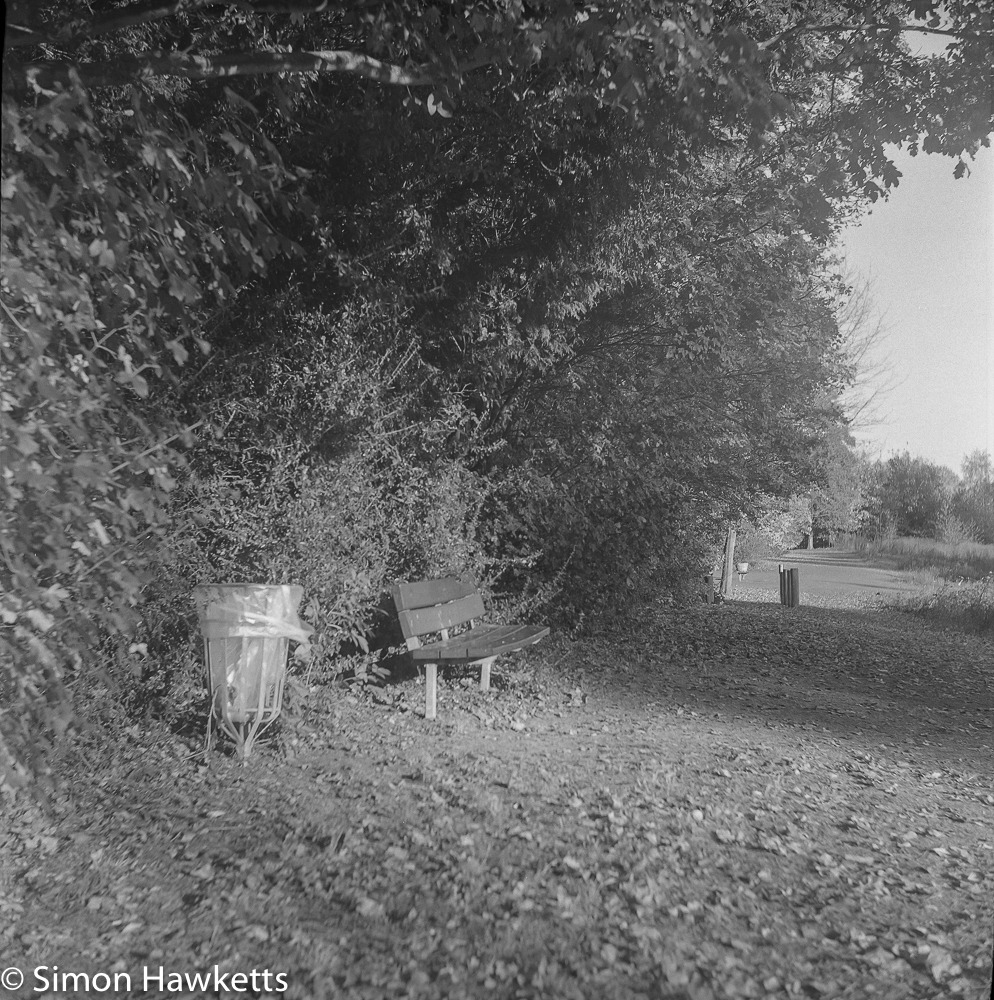
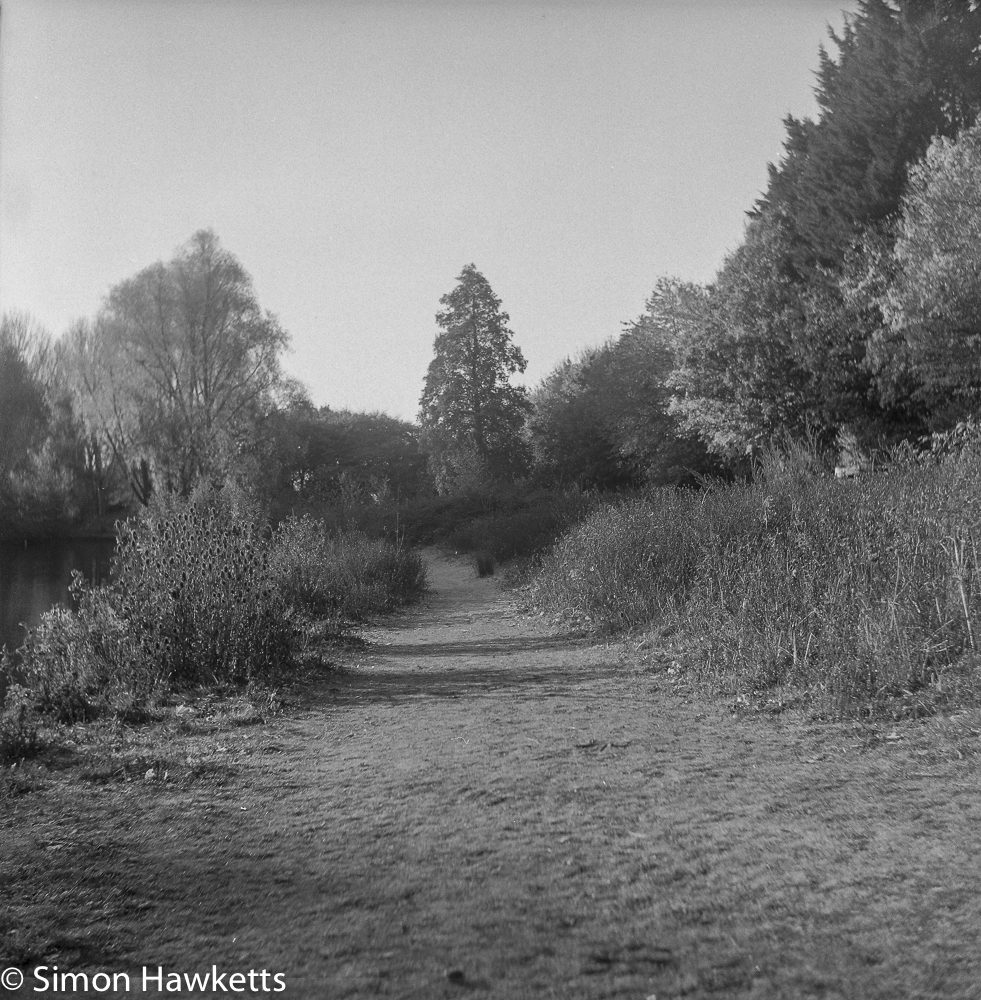
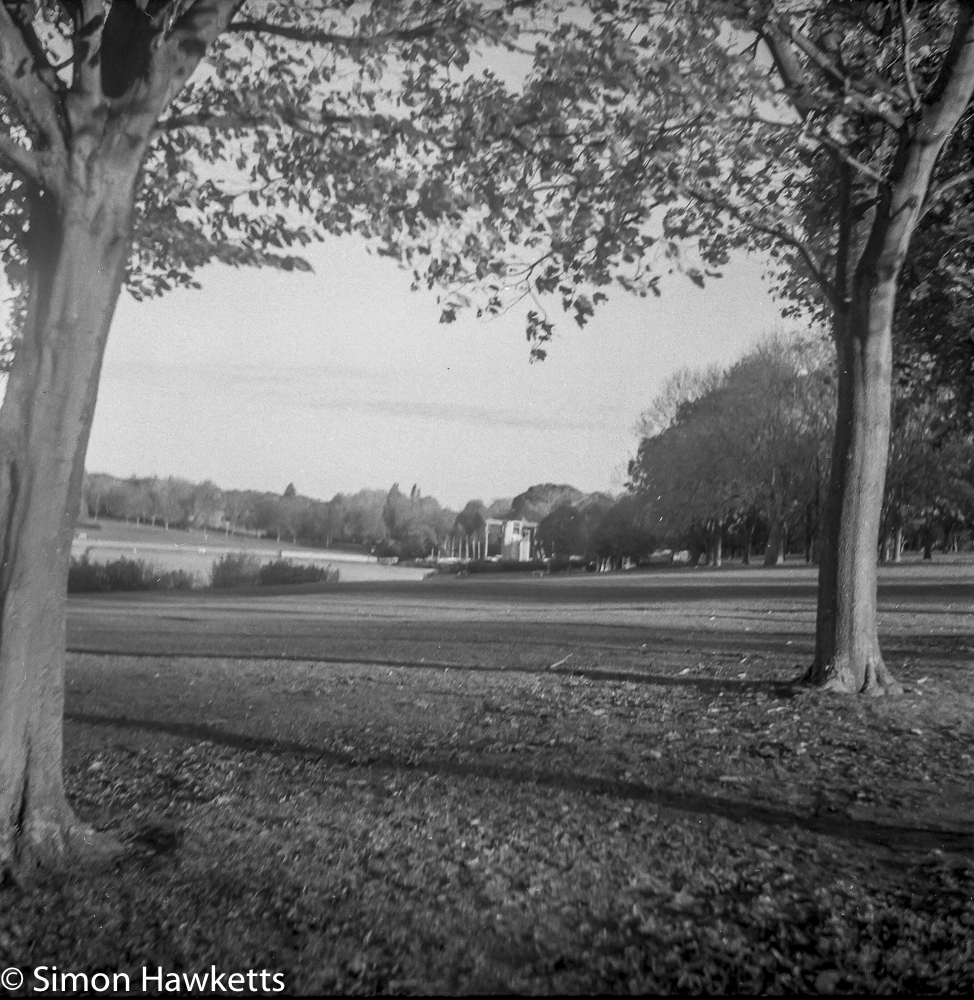
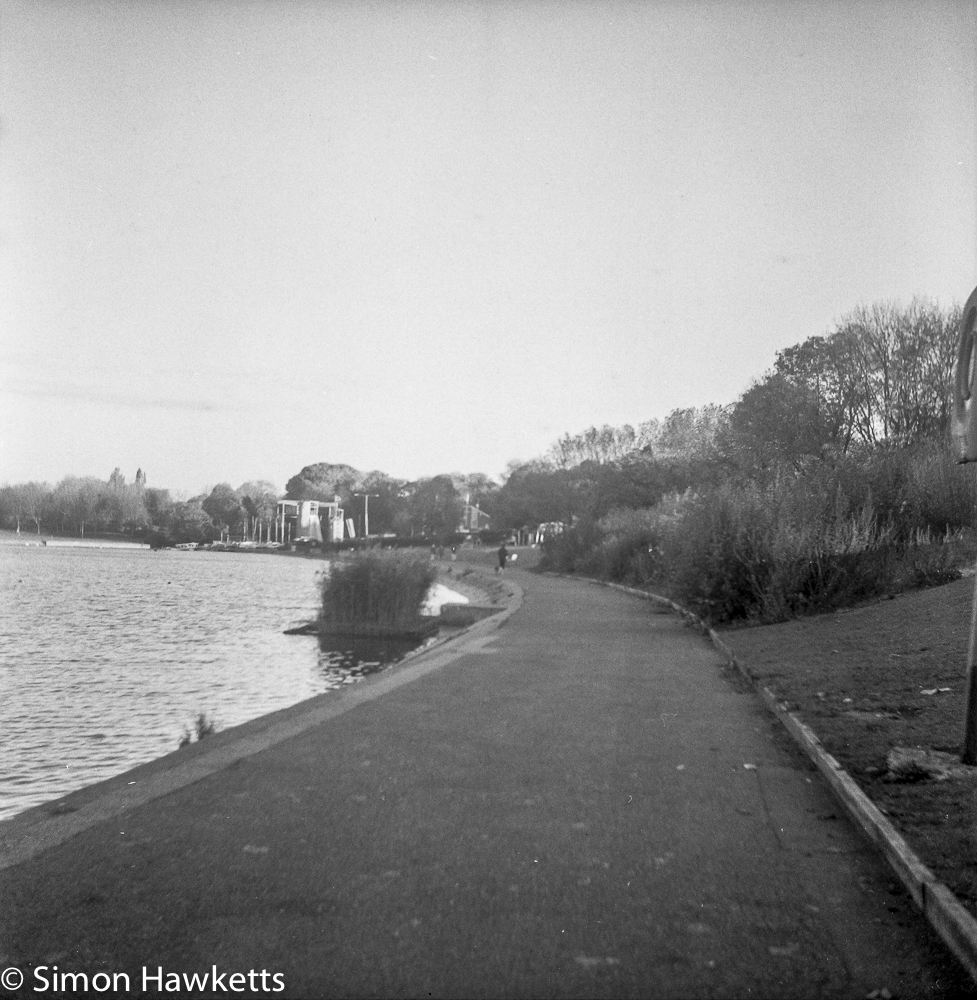
At first, I considered loading a roll of Provia 100F into the Weltaflex because I’ve received a 5 pack of this medium format slide film as a birthday present, and I’m dying to give it a go, but in the end I decided that it makes more sense to try the camera out with something I can easily develop myself and make sure everything is working first. So, in the end I loaded it with a roll of Ilford Delta 400 black & white film and relied on a light-meter app on my phone to judge the exposure.
The experience of using the Weltaflex was both rewarding and frustrating.
Rewarding because it’s nice to use a big viewfinder to compose the image, but frustrating because the viewfinder itself is so poor. When I initially looked in the top of the camera before I went out, I was quite encouraged because looking onto the focus screen from the shady environment of the house while the camera was pointing at a bright window, gave the impression that the screen was quite bright.
This turned out to be an illusion however, because out in the sunshine I found it almost impossible to see anything other than the centre of the screen. Also, the severe vignetting of the screen exacerbated that effect. I tried using the pop-up magnifier, but again it only really helps the centre of the image. For this reason, I took the majority of the pictures with quite a small aperture and relied on depth of field to make sure the pictures were focused.
Apart from the composition and focusing, the other real issue I had was trying to hold the camera still as I pressed the shutter. There seems to be a real kick just as the firing point is reached, and since the top shutter speed is only 1/200 sec even with the camera pressed into my body I found there is some shake on at least some of the negatives when viewed under magnification.
Being a TLR there was also a small problem with parallax on one of the pictures – I’d got low down to take a picture of the leaves on the path, and although I thought I’d compensated for the difference in the taking and viewing lens by raising the camera quite a lot, I found the final picture was still lower than I’d intended.
To develop the film I was going to use Rodinal, but a bit of research suggested that it isn’t the best developer for Delta 400, so in the end I used Ilford ID11 diluted 1+1 at 22 °C for 12 min. After the negatives had dried I scanned them with an Epson V550 perfection scanner and imported the TIFF files into Lightroom for a small amount of correction and sharpening.
Overall the negatives are quite good and the picture quality reasonable – certainly on par with the pictures I obtained from my Selfix 1620 folding camera.
Discover more from Everything Vintage
Subscribe to get the latest posts sent to your email.

